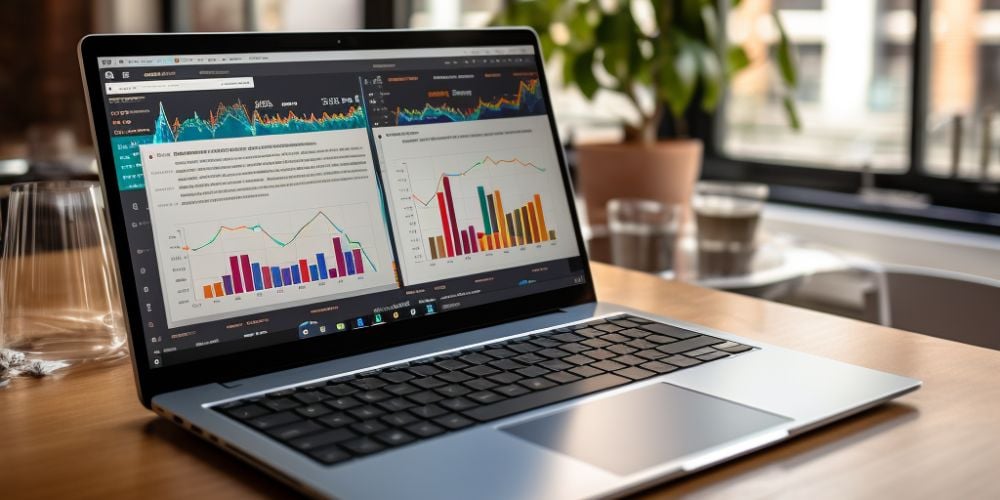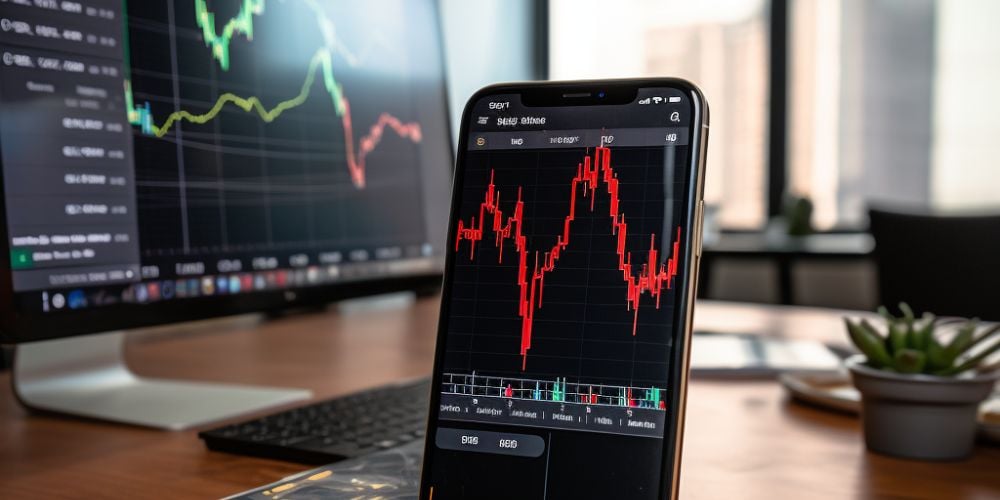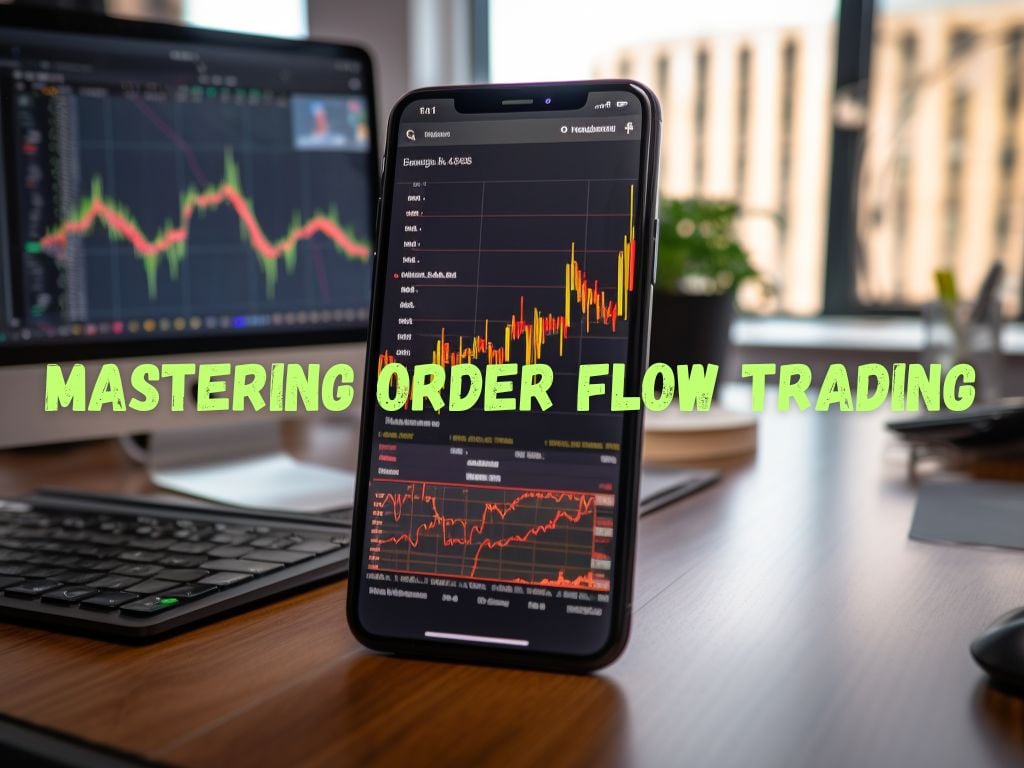Order flow trading is a powerful strategy used by traders to gain insights into market dynamics and make informed decisions.
By analyzing the flow of buy and sell orders, traders can gauge market sentiment, identify potential reversals, and spot profitable trading opportunities.
In this comprehensive guide, we will delve into the world of order flow trading, discussing its importance, key principles, tools, strategies, and implementation techniques.
Whether you are a beginner or an experienced trader, this guide will equip you with the knowledge and skills to excel in order flow trading.
Understanding Order Flow Trading
Order flow trading is a strategy that involves analyzing the flow of buy and sell orders in the market to gain insights into market dynamics.
It helps traders understand the sentiment behind the market moves and make informed trading decisions based on the order book.
Importance of Understanding Order Flow for Market Analysis
Understanding order flow is crucial for market analysis as it provides real-time insights into the mechanics of supply and demand in the market.
By analyzing order flow, traders can observe price action, identify areas of liquidity, and spot potential market turning points.

Types of Order Flow
There are several types of orders that traders use to participate in the market:
Market Orders:
Market orders are executed immediately at the current market price.
Traders use market orders when they want to ensure quick execution without specifying a specific price.
Limit Orders:
Limit orders are orders to buy or sell at a specific price level. Traders use limit orders to enter or exit the market at a predetermined price.
Stop Orders:
Stop orders are triggered when the market reaches a specified price level.
Traders use stop orders to automatically enter or exit positions at a predetermined price, often to limit losses or protect profits.
Cancel and Replace Orders:
Cancel and replace orders are used to modify or replace existing orders in the market.
Traders can modify the price or quantity of their existing orders without canceling and re-entering them.
Advantages of Order Flow Trading
Order flow trading offers several advantages for traders:
Provides Real-Time Market Sentiment:
By analyzing the flow of buy and sell orders, traders can gain insights into market sentiment in real-time.
This information helps them make more informed trading decisions.
Reveals Supply and Demand Imbalances:
Order flow analysis allows traders to identify supply and demand imbalances in the market.
This knowledge can help them anticipate potential price reversals or breakouts.
Identifies Potential Reversals and Breakouts:
By closely monitoring the order flow, traders can spot patterns that indicate potential market reversals or breakouts. This can lead to profitable trading opportunities.

Disadvantages of Order Flow Trading
While order flow trading offers many benefits, it also has some disadvantages:
Requires Interpretation and Analysis Skills:
Interpreting order flow data requires a certain level of skill and experience.
It takes time to develop the ability to accurately interpret the information provided by the order book.
Relies on Accurate and Reliable Order Book Data:
Order flow analysis relies on accurate and reliable order book data.
Traders must ensure they have access to high-quality order book data to make informed trading decisions.
May Experience Increased Trading Costs:
Some order flow strategies require frequent order placements and cancellations, which can result in increased trading costs, such as commissions and fees.
How to Read Order Flow Accurately?
Reading order flow involves understanding the key components of the order book and analyzing the information they provide. Here are some important aspects to consider:
Understanding Bid and Ask Prices:
The bid price represents the maximum price a buyer is willing to pay, while the ask price represents the minimum price a seller is willing to accept.
The spread is the difference between the bid and ask prices.
Analyzing Order Book Depth and Liquidity:
Order book depth refers to the number of buy and sell orders at various price levels.
Analyzing order book depth helps traders identify levels of support and resistance and evaluate market liquidity.
Interpreting Volume and Trade Size:
Volume represents the total number of shares or contracts traded during a specific period.
Large trade sizes indicate significant market interest, while small trade sizes may suggest lack of conviction.

Tools for Order Flow Trading
To effectively analyze order flow, traders utilize a range of tools. We will explore these tools in detail, including the limit order book, footprint charts, delta charts, and volume profiling.
Limit Order Book
A limit order book is a record of all the outstanding limit orders in the market at different price levels.
Analyzing the limit order book provides valuable insights into the supply and demand dynamics in the market, helping traders make informed trading decisions.
Footprint Charts
Footprint charts are visual representations of order flow and volume at different price levels. They help traders identify patterns, such as absorption or exhaustion of buying or selling pressure, to make effective trading decisions.
Delta Charts
Delta charts measure the difference between buying and selling volume at various price levels.
By analyzing delta, traders can gauge market sentiment and identify potential reversals or trend continuations.
Volume Profiling
Volume profiling involves analyzing the distribution of volume at different price levels.
Traders use volume profile to identify key support and resistance levels and understand the participation of different market participants.
Strategies for Order Flow Trading
Order flow trading can be applied across various trading styles, including scalping, swing trading, position trading, and news trading.
Scalping
Scalping is a short-term trading strategy that involves taking quick profits on small price movements. Order flow analysis can help scalpers identify high-probability trade setups and set precise profit targets.
Swing Trading
Swing trading is a medium-term strategy that aims to capture shorter-term price swings within a larger trend. Order flow analysis can help swing traders determine entry and exit points and confirm the strength of a trend.
Position Trading
Position trading is a long-term strategy that aims to capture larger price moves over an extended period. Order flow analysis can help position traders identify long-term trends, spot potential turning points, and manage risk.
News Trading
News trading involves trading around high-impact news events. Order flow analysis helps traders anticipate market reactions and trade effectively during volatile periods.

Order Flow Trading Techniques
To gain a competitive edge in order flow trading, it is essential to employ specific techniques.
Cluster Analysis
Cluster analysis involves identifying clusters of orders in the order book that indicate accumulation or distribution zones. By analyzing clusters, traders can gain insights into potential reversals or breakouts.
Cumulative Delta
Cumulative delta measures the cumulative buying or selling volume over a specified time period. Traders use cumulative delta to confirm trends, identify divergence signals, and understand market sentiment.
Iceberg Orders
Iceberg orders are large orders that are broken into smaller orders to hide the total size.
Detecting iceberg orders can help traders identify hidden liquidity and anticipate potential price movements.
Stop-Loss Hunting
Stop-loss hunting refers to the intentional triggering of stop orders to create a temporary price movement. Identifying and understanding stop-loss hunting patterns can help traders manage risk and avoid unnecessary losses.
Spoofing
Spoofing involves placing fake orders to manipulate the perception of supply and demand in the market. Detecting spoofing patterns can help traders protect themselves from manipulation and make more informed trading decisions.
Implementing Order Flow Trading
Implementing order flow trading requires selecting the right broker, setting up a trading platform, developing a trading plan, and managing risk effectively.
Choosing a Broker
When selecting a broker for order flow trading, it is important to consider factors such as order execution speed, reliability, access to order flow data, and the availability of order flow analysis tools.
Setting up a Trading Platform
A trading platform with features and functionality for order flow analysis is essential for successful order flow trading. Traders should choose a platform that provides access to real-time data, order book visualization, and customizable tools.
Developing a Trading Plan
A well-defined trading plan is essential for order flow trading. Traders should set realistic goals, define entry and exit criteria based on order flow analysis, and incorporate risk management strategies to protect capital.
Managing Risk
Risk management is crucial in order flow trading. Traders should determine their position size based on account risk parameters, utilize stop-loss orders effectively, and continuously monitor and adapt their risk management approach.

Conclusion
In conclusion, order flow trading is a powerful strategy that can elevate your trading performance.
By understanding the nuances of order flow, utilizing the right tools and techniques, and implementing a well thought-out strategy, you can gain a competitive edge in the market.
Now armed with the knowledge and skills from this comprehensive guide, take action and improve your trading strategy with order flow analysis.
Remember, order flow trading is a continuous learning process, and practice makes perfect. Embrace the journey, refine your skills, and unlock the full potential of order flow trading.
Start today and experience the transformative impact it can have on your trading success.
By following this comprehensive guide, you will be on your way to mastering order flow trading and improving your strategy.
What are you waiting for? Start your order flow trading journey today and take control of your trading future.


 Tags:
Tags:










